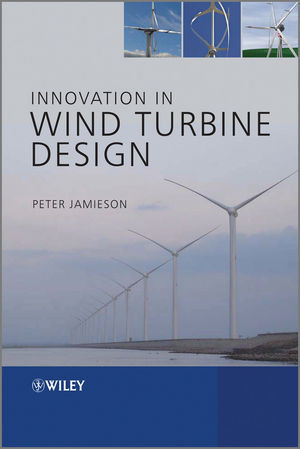

Most ebook files are in PDF format, so you can easily read them using various software such as Foxit Reader or directly on the Google Chrome browser.
Some ebook files are released by publishers in other formats such as .awz, .mobi, .epub, .fb2, etc. You may need to install specific software to read these formats on mobile/PC, such as Calibre.
Please read the tutorial at this link: https://ebookbell.com/faq
We offer FREE conversion to the popular formats you request; however, this may take some time. Therefore, right after payment, please email us, and we will try to provide the service as quickly as possible.
For some exceptional file formats or broken links (if any), please refrain from opening any disputes. Instead, email us first, and we will try to assist within a maximum of 6 hours.
EbookBell Team

0.0
0 reviewsInnovation in Wind Turbine Design is divided into four main sections covering design background, technology evaluation, design themes and innovative technology examples:
This groundbreaking synopsis of the state of the art in wind turbine design is must-have reading for professional wind engineers, power engineers and turbine designers, as well as consultants, researchers and academics working in renewable energy.Content:
Chapter 1 Rotor Aerodynamic Theory (pages 9–44):
Chapter 2 Rotor Aerodynamic Design (pages 45–56):
Chapter 3 Rotor Structural Interactions (pages 57–73):
Chapter 4 Upscaling of Wind Turbine Systems (pages 75–104):
Chapter 5 Wind Energy Conversion Concepts (pages 105–108):
Chapter 6 Drive Train Design (pages 109–130):
Chapter 7 Offshore Wind Turbines (pages 131–142):
Chapter 8 Technology Trends Summary (pages 143–149):
Chapter 9 Cost of Energy (pages 151–171):
Chapter 10 Evaluation Methodology (pages 173–188):
Chapter 11 Optimum Blade Number (pages 189–199):
Chapter 12 Pitch versus Stall (pages 201–209):
Chapter 13 HAWT or VAWT? (pages 211–222):
Chapter 14 Free Yaw (pages 223–227):
Chapter 15 Multi Rotor Systems (pages 229–238):
Chapter 16 Design Themes Summary (pages 239–240):
Chapter 17 Adaptable Rotor Concepts (pages 243–254):
Chapter 18 A Shrouded Rotor (pages 255–258):
Chapter 19 The Gamesa G10X Drive Train (pages 259–261):
Chapter 20 Gyroscopic Torque Transmission (pages 263–268):
Chapter 21 The Norsetek Rotor Design (pages 269–271):
Chapter 22 Siemens Blade Technology (pages 273–275):
Chapter 23 Stall Induced Vibrations (pages 277–281):
Chapter 24 Magnetic Gearing and Pseudo?Direct Drive (pages 283–288):
Chapter 25 Summary and Concluding Comments (page 289):